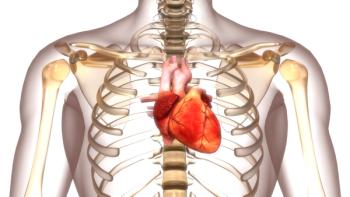
ShiraTronics reports yearlong migraine relief with implantable neuromodulation therapy
Key Takeaways
- The ShiraTronics device showed a 9.6-day reduction in monthly headache and migraine days over 12 months, with sustained benefits and improved quality of life.
- The system targets occipital and supraorbital nerves, offering a drug-free, patient-controlled neuromodulation therapy without systemic side effects.
ShiraTronics unveiled an implantable device that offers sustained migraine relief, reducing headache days and improving quality of life for patients.
An investigational implantable device designed to treat chronic
The company said its RELIEV-CM Pilot Study showed patients continued to experience fewer headaches, lower migraine severity and improved quality of life one year after implantation of the ShiraTronics Migraine Therapy System. The device also reduced patients’ reliance on rescue medications and maintained a favorable safety profile, with no unanticipated adverse events reported.
On average, participants recorded a 9.6-day reduction in both monthly headache days and monthly migraine days compared with baseline. The yearlong findings build on 12-week results reported earlier, in which patients experienced an 11.3-day reduction in monthly headache days, with 80% achieving at least a 50% reduction.
“These 12-month outcomes reinforce the strength and sustainability of our early findings,” said Rob Binney, CEO of ShiraTronics. “For patients living with chronic migraine — who often cycle through medications with limited or temporary success — the consistency of benefit seen over an entire year is a meaningful signal. We believe this investigational therapy is positioned to address one of the largest unmet needs in neurology.”
A precision-engineered approach
The ShiraTronics system is the first fully
The system delivers low-level, patient-controlled electrical stimulation intended to modulate pain signaling in the trigeminocervical complex, a hub in migraine processing. Patients can use the system continuously or tailor the stimulation to their needs, offering a drug-free option without the systemic side effects of preventive medications.
“The long-term results from this pilot study are particularly encouraging and reinforce the potential of this therapy to deliver meaningful, sustained relief,” said Samer Narouze and Brian Grosberg, national co-principal investigators for the company’s ongoing pivotal study. “These findings offer real hope for a population that has long needed better solutions.”
Study design and outcomes
The RELIEV-CM Pilot Study was a prospective, multi-center investigation conducted at four international sites. Candidates were screened using a 28-day electronic headache diary to confirm eligibility under criteria for chronic migraine.
Those who qualified first completed a temporary external trial to test tolerability before moving to implantation. Patients who advanced received bilateral, subcutaneous placement of pulse generators and leads targeting the occipital and supraorbital nerves.
Participants were followed for 12 months, with outcome measures including monthly headache days, migraine days, quality-of-life scores, headache disability assessments and use of rescue medications. Investigators reported that improvements seen at 12 weeks not only held but continued to trend positively over the year across multiple endpoints.
“Many of my patients with chronic migraine have tried multiple drug therapies, including CGRPs and Botox, and still suffer significantly,” said Matthew Green, a principal investigator in the pilot study. “The sustained improvements we’re seeing over a full year with this investigational therapy are both clinically meaningful and personally hopeful.”
An urgent need
Chronic migraine affects more than 5.5 million people in the United States annually and is considered by the World Health Organization to be among the most disabling neurological disorders. Patients typically experience 15 or more headache days per month, with at least eight having migraine characteristics.
Existing therapies, including monoclonal antibodies targeting CGRP and Botox injections, can help some patients but often fall short. Studies show that roughly 30% to 40% of patients discontinue preventive medications within the first year due to side effects, lack of sustained benefit or challenges with adherence.
For patients who remain refractory to available options, the ShiraTronics system could offer a continuous, personalized therapy that directly targets the neural pathways underlying migraine.
Next steps
The ShiraTronics Migraine Therapy System has received Breakthrough Device Designation from the U.S. Food and Drug Administration. The company is now enrolling patients in its RELIEV-CM2 pivotal trial, a larger randomized, double-blind study aimed at further evaluating safety and effectiveness. Results are expected in 2026.
If confirmed in larger trials, the system could mark a new approach in the prevention of chronic migraine, offering long-term relief without the trade-offs associated with systemic drug therapies.
Newsletter
Stay informed and empowered with Medical Economics enewsletter, delivering expert insights, financial strategies, practice management tips and technology trends — tailored for today’s physicians.








